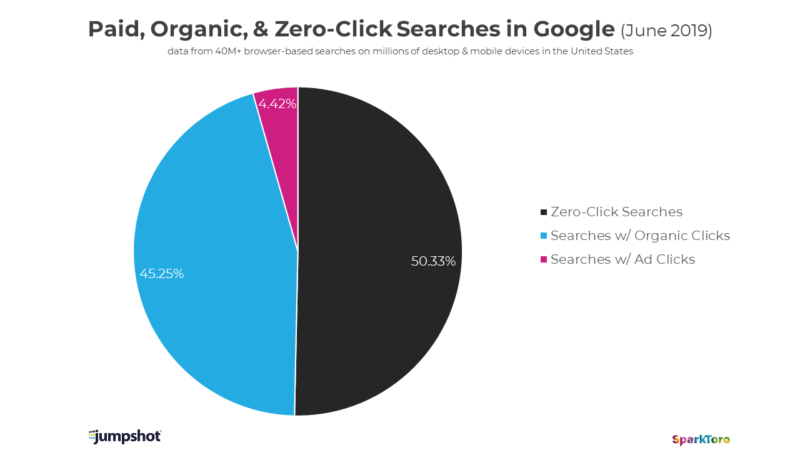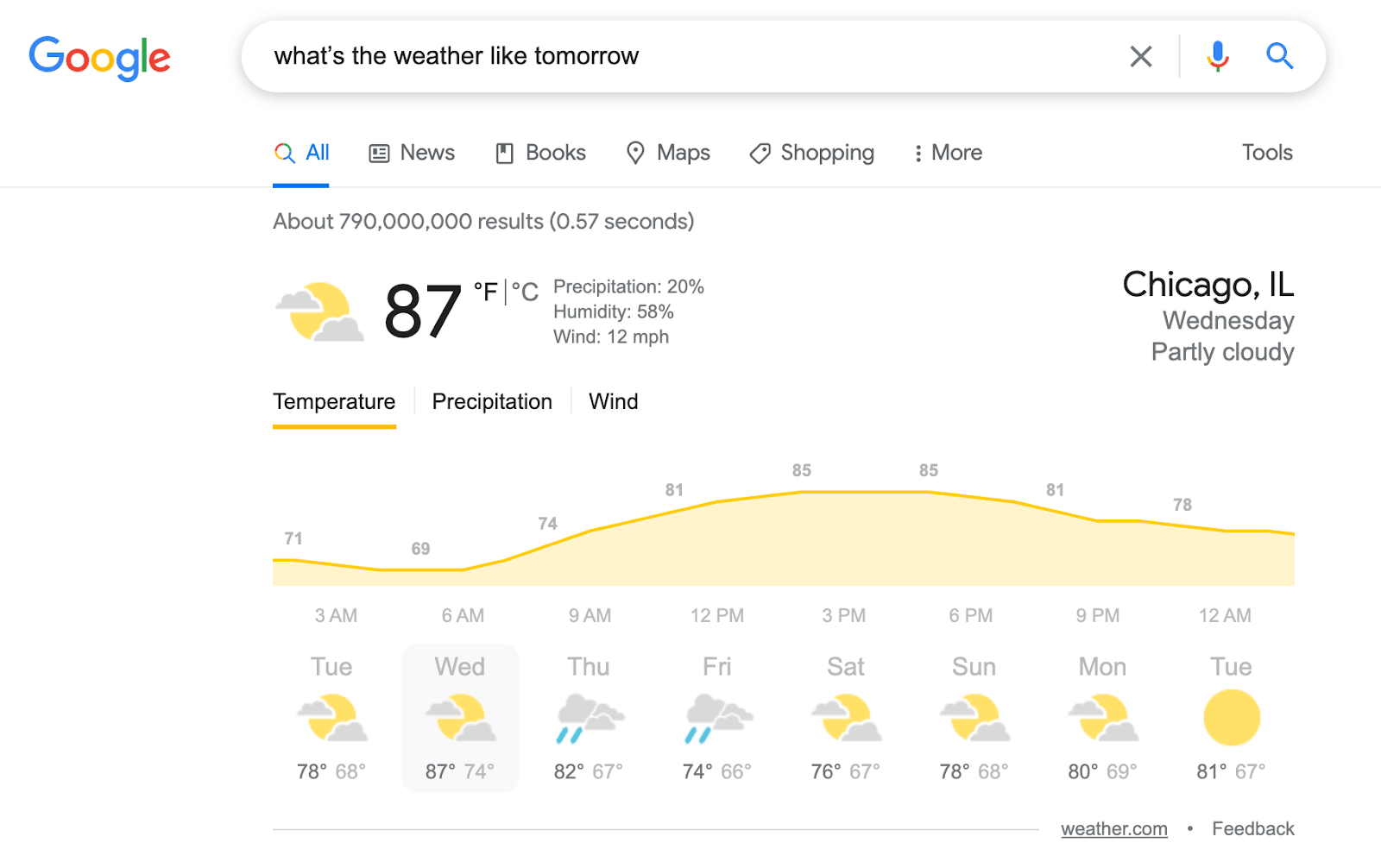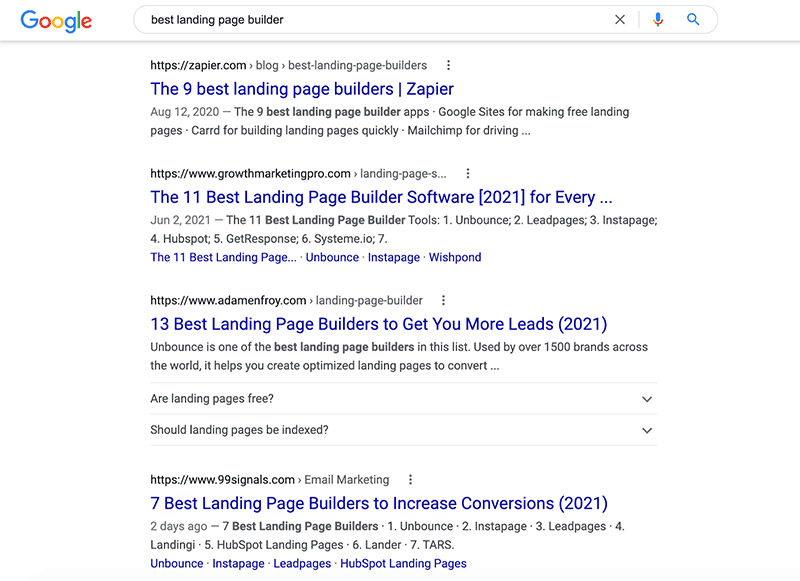Search engines are more sophisticated than ever. Long gone are the days when you could stuff a keyword into content to get higher on SERPs. To rank on Google, your content needs to address search intent. If you can’t do this, your content will never appear at the top of the search results.
Thankfully, optimizing content for search intent is not all that difficult. This guide will walk you through everything you need to know about search intent and how to incorporate this knowledge into your content marketing efforts.
What Is Search Intent?
Search intent is the goal an individual wants to achieve when using a search engine. When entering a query, a person generally wants to do one of the following four things; find an answer to a question, go to a site where they can purchase a product or service, find a page on a site, or compare products or services.
Why Is Search Intent Important in SEO?
Search engines are constantly trying to improve the user experience. That means providing content that people find useful at the top of the search results for every inquiry they make. If they do this successfully, they’ll get more users and make more revenue through advertising placements.
Search engines are very good at doing this. A search algorithm assesses how well a page on a website satisfies user needs by measuring metrics like bounce rate. If many people visit a page and go back to the search engine and click another result, that page will go down in the search rankings.
To dominate the SERPs, you need to create content that fits user intent. Regardless of how many backlinks you throw at an article, the content will never rank if it fails to satisfy search intent. That’s why understanding search intent is crucial.
Four Types of Search Intent
There are generally agreed types of search intent. They are; informational, navigational, transactional, and commercial. Keep reading to learn about each of these types of search intent.
1. Informational
Informational searches are queries where the user is looking for an answer to a question. As much as 80% of all search queries are informational. Here are some examples of informational searches.
- How old is Scarlett Johannson?
- How can I boost my SEO?
- What’s the weather like tomorrow?
- How to repair a broken windscreen wiper?
Frequently, Google provides the answer to an informational search in the search results through instant answers. Just over 45% of searches on Google have a zero click through rate.
For example, here’s what I see when I enter the term “what’s the weather like tomorrow.”
You don’t want to be trying to rank for these types of terms where the information is constantly changing. Instead, you need to focus on terms where you have a good grasp of the information (or are able to make reasonable assumptions for future events).
For searches of this nature, you might find the odd sales page, where a company thinks they can generate conversions from people doing an informational search. In general, though, you’ll find evergreen blog content ranking for informational searches.
2. Navigational
Around 10% of search queries are navigational. These are the searches where the user is looking for a particular website, page, or piece of content. For example, most people who type Facebook into Google want to be taken to the Facebook login page.
People use search engines as navigational tools because it’s a lot faster to input a query into Google than to type out a long URL. Additionally, some websites have weak internal search functionality.
For example, it’s easier to look for a specific Reddit thread by typing the title into Google and adding Reddit.
Navigational search intent is only of value when users are specifically looking for your website.
If you start ranking unintentionally for a tangential navigational search query, the chances are that it will not deliver any site visitors. People making a navigational search query know what they want (and what they don’t).
3. Transactional
When someone is ready to buy a product or a service, they head to search engines with transactional intent. In most cases, those searches are intended to find a commercial website to buy whatever they need. Examples would include searches that look like:
- Nike running shoes
- Buy coffee beans
- XXL t-shirts
- Order tickets for the new Star Wars movie
Unsurprisingly, you’ll find sales pages ranking for these types of search terms. For example, Zoomshift has a schedule maker, and we naturally want to rank for buying terms associated with this phrase.
4. Commercial
People make a commercial inquiry when researching products or services to buy. A commercial search might include the term “review,” for example. Alternatively, you might compare different products.
If someone is conducting a commercial search query, they are close to making a purchase. The person is researching what product to buy and where to make the purchase.
Examples of commercial search terms include:
- Best car covers
- VPN reviews
- Professional cameras for beginners
The type of search term a person uses will define the kind of content you want to deliver. For example, you’ll find many list posts fighting it out for the top of the search results targeting commercial terms.
Here’s a nice example.
All of the top pieces of content for this search term are list posts. List posts are great for comparative searches because they fulfill search intent.
5 Ways to Optimize Content for Search Intent
When optimizing your content for search intent, the goal is to ensure that every landing page is created to match the needs of your audience. For example, you wouldn’t want to show a product page to someone conducting an informational search. If someone wants to buy your product, they don’t want to be taken to a long-form article.
Here are some tips for ensuring that your content is optimized for search intent.
1. Add Value
This one factor should be informing your entire digital content strategy. You need to ensure that the content that you create is going to provide value to an audience. Stop thinking about SEO and SERPs for a moment, and stop thinking about search engine algorithms.
Your only goal should be to create content that matches the needs of your target audience.
By putting the audience first, you’ll create content that is more solution-led. That means your content will end up richer and more interesting.
Don’t make the mistake of creating content that appeals to the changing whims of a search algorithm. Content marketers that try to hack the algorithm will see sudden dips after an update. Instead, focus on the reader.
Your goal should be to create engaging content people want to read. Look at your keywords and build content around the search terms that help people and provide value. If you get this right, you’ll get regular readers who come to your website because you fulfill their needs.
2. Sync Search Intent and Conversion Points
When you take the time to understand search intent, you’re getting into the minds of your potential customers. You can more fully appreciate what they’re looking for, what they want, and even where they are on the buyer’s journey.
To make sure that your search intent and conversion points are in sync is a natural process. By creating a landing page that is perfectly designed to match the needs of your users, you keep them on-site longer. That means more opportunities to lead them elsewhere or to respond to your CTAs. It’s simply a matter of:
- Knowing the search queries that will bring users to your content
- Understanding the intent of those queries
- Creating landing pages that will answer the questions that your audience is asking
- Developing unique CTAs and special offers that respond to search intent
Conversion optimization is about paying more attention to what consumers want from you and delivering solutions. Make sure that you have answers to the following:
- What is the user looking for?
- What kind of content will match that search intent?
- How to turn informational, commercial, and navigational searches into transactional?
The more you can answer these questions, the easier it will be to get right into the minds of your target audience. You’ll understand more about what they need and how best to turn that need into a selling opportunity.
3. Follow the Market’s Lead
Your business will have specific industry keywords you want to rank well for. The main thing to remember with keywords is that they are the same words that your customers will be using. Those customers will use very specific keywords when they are searching for what you sell. You need to make use of the most important keywords for your industry.
That means you need to take a deep dive into keyword research. You’ll need to use resources like Google Analytics or Moz to determine your top-performing keyword. You’ll also need to research your leading competitors to determine what keywords they’re using.
The goal is to understand how your target audience is using your keywords more fully.
Once you’ve identified those target keywords, check what is appearing in the search results. Seeing what appears in the search results will help you understand search intent.
It’s a very common mistake to see websites that use transactional keywords but deliver informational content. Checking and mapping your keywords is vital. Even if your content is performing well, it can still be hard for potential customers to find it when they need it if you’re not using the right keywords.
4. Organize Content Based on User Needs
Search intent can help inform and structure your content. The content that you create must cover all of the potential aspects of a user query and answer any potential follow-up questions.
You can do this by using:
- FAQs that your brand is asked
- Google snippets
- Google’s related searches
- Resources like SEMrush
The intent of a keyword will always affect exactly how you use it. For users in the early stages of the buyer journey, a search query might be something along the lines of ‘do I need to see a dentist’. That gives you room to create a page of content that will provide them with a checklist that will answer their question.
For audiences that are further along the sales funnel, they will instead be conducting search queries like ‘dentists near me’. That will be a hot lead, so targeting those keywords is more likely to get you transactional search intent results. For that keyword selection, you’re perfectly primed to build a PPC campaign so that you can get immediate traction.
5. Allow Format to Be Dictated by Intent
The format of content that you create needs to be informed by search intent. The best way to do this is by looking at your competitors. Google is your friend here.
Input your keywords and have a look at the kinds of content that Google prioritizes.
If the top result on a SERP for your keywords is a blog, you need to create a structured blog post. Ideally, but better, longer, and more informational. If the top result is a video, then you need to create a better one. Some business owners feel like this is cheating, but there are no cheats in SEO. Emulating and then improving what works is one of the best ways to boost your online visibility.
From long-form informational blog posts to checklists, listicles, and videos, look at what works already. Then, create something that goes more in-depth, answers more questions, and is better in every way.
Conclusion
Search engines don’t officially recognize the notion of search intent. That’s why there are so many different views on it and misunderstandings about how important it is. However, the more that you can answer the questions that your target audience is asking, the more value you have. That means higher CTRs, longer dwell times, and lower bounce rates.
These are all signals to search engines that you are providing value. When the value is a priority of those search engines, search intent can’t be ignored.
By building and creating the right content that provides clear answers that are better than your competitors, you boost your online visibility. Prioritizing search intent can become the key to brand growth.
For more great tips, tricks and how-to guides, subscribe to the DivvyHQ blog today!






